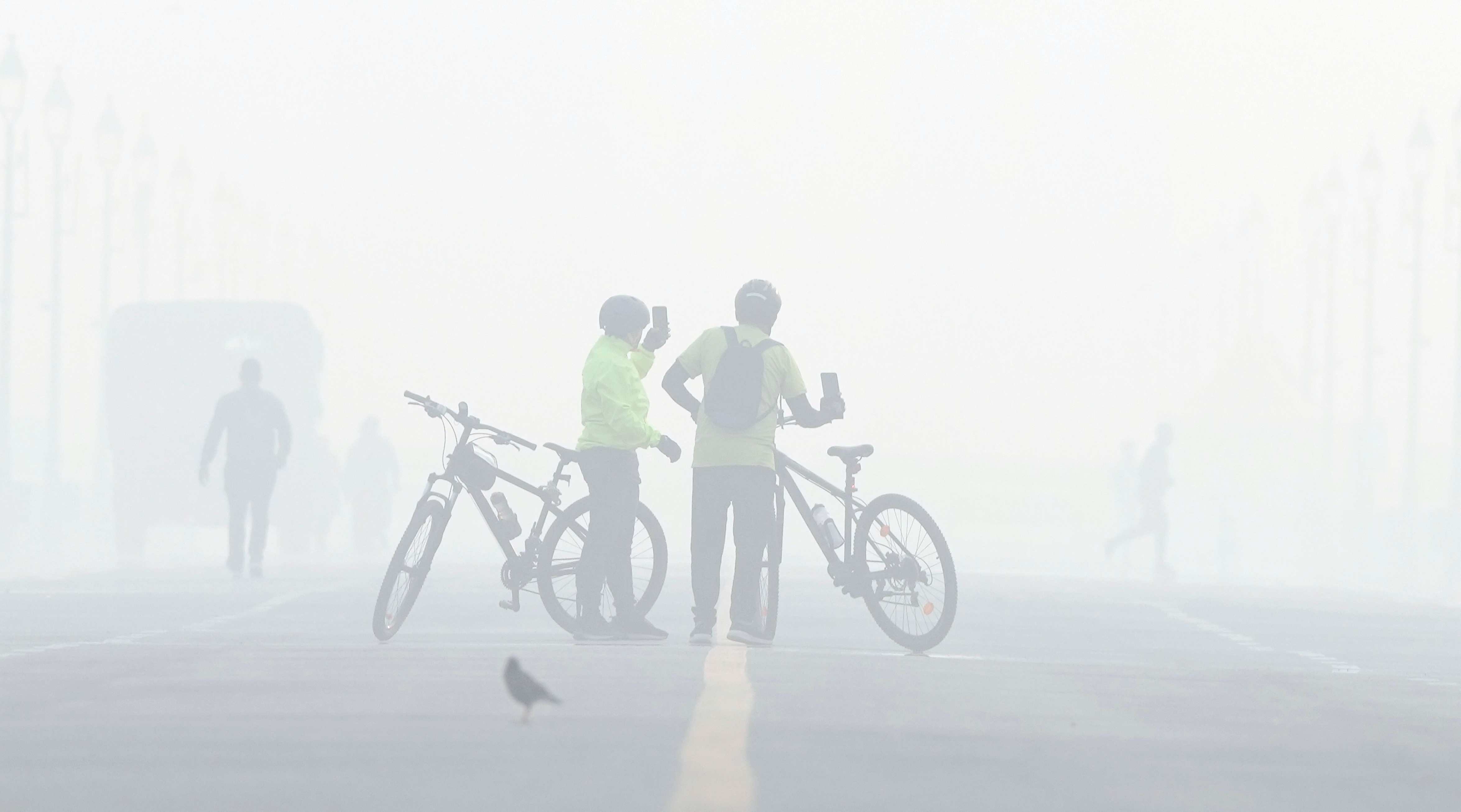 Cyclists click selfies amid low visibility due to smog, at Kartavya Path in New Delhi, Friday, Nov. 11, 2022. (PTI Photo)
Cyclists click selfies amid low visibility due to smog, at Kartavya Path in New Delhi, Friday, Nov. 11, 2022. (PTI Photo)Restrictions under phase-3 of the Graded Response Action Plan (GRAP) will continue in Delhi-NCR, with the Commission for Air Quality Management (CAQM) deciding it should not be withdrawn at this stage considering that the AQI has been showing an “increasing trend”.
Going by the Central Pollution Control Board’s (CPCB) 4 pm bulletin on Friday, Delhi’s 24-hour average AQI was 346 in the ‘very poor’ category, having deteriorated from 295 the previous day. With wind speed picking up, Delhi’s air quality had improved to be in the ‘poor’ category on November 9 and 10.
Restrictions under stage-3 of GRAP that will remain in place include a ban on construction and demolition activities except for certain projects including work on hospitals, metro and railway services, linear public projects like highways, roads and flyovers, and sanitation and water supply projects. It is under this stage of GRAP that the Delhi government has imposed a ban on BS-III petrol and BS-IV diesel four wheelers in the city.
A communication from the CAQM attributed the deterioration in Delhi’s air quality to wind conditions not being favourable and dispersion of pollutants not being effective.
With winds from the northwest carrying smoke from stubble burning to Delhi, the contribution of crop residue burning to PM2.5 levels in the city increased from 8% on Thursday to 19% on Friday, according to an update issued by the SAFAR forecasting system. The forecast issued by SAFAR on Friday indicated that a drop in the minimum temperature over the next two days could aid the accumulation of pollutants.
The air quality is likely to remain in the upper end of the ‘very poor’ category over the weekend, due to strong winds from the northwest bringing in pollutants. The “rate of inflow of pollutants” is likely to be more than the dispersion, resulting in accumulation and deterioration of air quality over the weekend, the SAFAR forecast said.
Data from the Indian Agricultural Research Institute (IARI) on Friday showed that Punjab recorded an increase in paddy residue burning events on Friday. The fire count, which IARI obtains from NASA satellites, on Friday in Punjab was 3,916, up from 1,893 the previous day. This is also the highest single-day fire count recorded so far this year. Haryana recorded 152 burning events on Friday, up from 35 the previous day. The fire count in Punjab so far this season is 40,677, lower than the 55,718 recorded till November 11 last year.